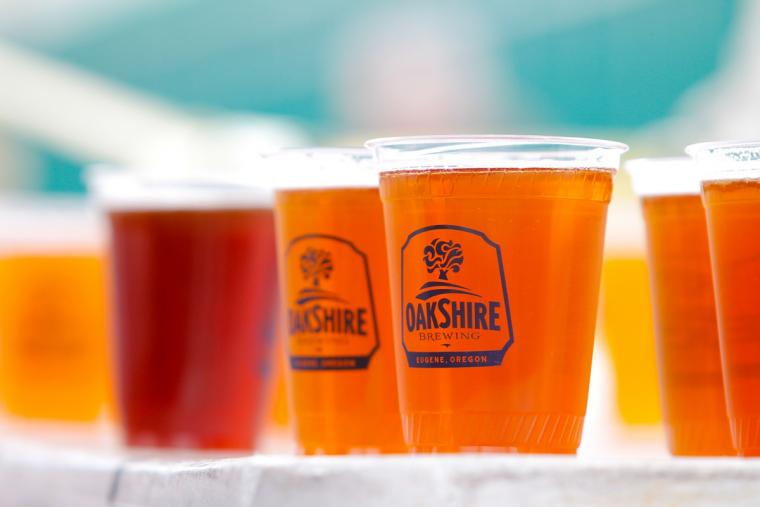
Photo © Joshua Rainey | Dreamstime.com
Beer mile races. They’re not just for St. Patrick’s Day anymore.
The premise, which involves the dubious combination of speed running and speed drinking, is simple. Make a lap around a track, and with each lap, drink a beer. The runner with the fastest time (and no, ahem, digestive incidents) wins.
Beer races (alternatively known as beer runs) have been around for quite a while – though they’re not quite what you’d call an Olympic tradition. Runner’s World actually did a history of the beer mile, noting that it started “back in 1989, [with] just seven Canadian runners in their late teens and early 20s, looking for a laugh on a muggy August night.”
Out of those humble traditions, more races were born. Now, the Internet is full of them, and there is even a website designed by a longtime participant, www.beermile.com, billing itself as “the official racing resource.” The website hosts a database of thousands of race results, official and unofficial, and documents a variety of rules. So, yeah, beer miles have a legitimacy – although it's unlikely the IOC will be calling them anytime soon.
But, as Runner’s World notes, “the Web did more to promote the beer mile than bragging over a bar table ever could.”

No kidding. This is a science to these guys. They will tell you about their absolute preference for the race: Bottles, not cans (cans create too much foam and contribute to, well, yeah. What happens when you shake up a beer? Multiply that by putting it inside yourself and running). In beer mile circles, it’s politely referred to, Outside Magazine notes, as “reversal of fortune.”
Outside, which covered the Beer Mile World Classic, noted that this year’s event, held on a venue that didn’t allow glass, had its share of those issues.
“The clock stops for each runner after the fourth lap is completed, unless they spew, when an additional fifth 400-meter penalty lap is required,” Outside adds helpfully.
Yeah, like that helps, and there are photos with that article to prove it doesn’t. We’ll spare you the visual, although the Beer Mile World Classic had its own live feed if you’re masochistic curious.
There’s a certain alcohol percentage that beers must have in order to be considered legitimate for competition. Oh, and upon finishing the beer, some races require runners to turn the container upside down over their heads to prove that it is empty. Dumping the can on the track, or in a trashcan, doesn’t cut it. The beer also has to be gulped in a “chug zone.” Running along the track, sipping beer outside the chug zone, is a DQ. Or maybe a DNF. It really depends on the judges and the race.
Racers have found that if they chug the beer at a 45-degree angle (!), it is less likely to create foam that will impact their race later.
Like we said, they have it down to a science.
Beer has long been a staple at the finish line of some races. While St. Patrick’s Day races (or maybe Cinco de Mayo races) might be the first to come to mind, the obstacle race community often offers libations at the finish line, creating what some have called the MOB (mud, obstacles, beer) phenomenon. And there’s always the Marathon du Medoc that is held each summer in the Bordeaux region of France. During the course of the 26.2-mile event, competitors sample 23 different wines. Wikipedia notes that race, in which 90 percent of the runners compete in costume, has been described as “the world's longest, booziest, race” as well as the “world's most idiotic marathon.”
But back to the beer miler. The venue is important. Tracks aren’t always used; roads can be as well, although it’s far easier for judges to keep an eye on participating runners and watch for reversal than it is on a road. Besides, beer races on the whole tend to attract a smaller group. Not everyone wants to engage in this discipline, such that it is.
But some people do, and they actually train (!) for it. Runner’s World notes that some runners follow the example of competitive eaters and work to stretch their stomachs by eating enormous amounts of starchy foods, drinking water before a race, and even having friends time them as they do “training beer miles.”
For the record, they also add, “Don’t try this at home.”
And to be fair, a lot of the participants in the event are already elite runners. Canadian Corey Bellermore, notes Outside, is “a runner who has made a living at running fast open miles and beer miles—literally, given that he’s sponsored by Adidas — he lived up to his billing as the men’s favorite. (For reference, Bellemore owns a 3:57.42 PB in an open mile.) He didn’t disappoint this year, but instead put on a clinic and won the men’s race in wire-to-wire fashion, 15 seconds ahead of Sweden’s Emil Granqvist (5:10).”
Oh, and by the way, the next Beer Mile World Classic will be held in Chicago. And at that venue, bottles will be legal.

